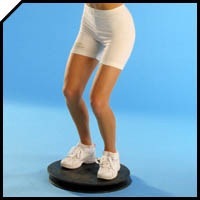Nearly half of patients undergoing laparoscopic gastric banding for obesity eventually needed to have the devices removed because of erosion or some other malfunction, researchers said.
Among 82 patients followed for at least 12 years after lap-band surgery at a single institution, 49 had at least one reoperation for complications or device failure, according to Jacques Himpens, MD, of Saint Pierre University Hospital in Brussels, and colleagues.
They also reported online in Archives of Surgery that 41 had the bands removed during follow-up, with 14 then undergoing Roux-en-Y gastric bypass surgery. In all but a few cases, inadequate weight loss or device breakdown was the reason for band removal.
Action Points
- Note that, at present, laparoscopic adjustable gastric banding and laparoscopic Roux-en-Y gastric bypass are the bariatric procedures most frequently used in the U.S.
- Point out that in this study, of 82 patients, 50% eventually had their band removed for several issues.
- Point out that this and other studies indicated in an invited critique suggest that banding may be an easier operation, and the choice of procedure therefore should depend upon conversations between physicians and patients concerning the pros and cons of each.
"The high failure rate of laparoscopic adjustable gastric banding, at least in our hands, could be detrimental to its future continued widespread use as a restrictive weight-loss operation," Himpens and colleagues wrote.
But the researchers also found that, of 78 patients indicating their level of satisfaction with the original lap-band procedure, 60% said they were pleased or very pleased.
Moreover, on an intent-to-treat basis, patients in the study had lost 42.8% of their original excess weight at follow-up, and the mean reduction in body mass index was 7.8 points.
The study involved 151 consecutive patients receiving lap-band surgery (using a device made by Bio-Enterics) from 1994 to 1997. Himpens and colleagues tried to contact them by telephone and mail, succeeding with 82.
They suggested that the patients lost to follow-up probably had lost little weight, insofar as regular postoperative evaluations and treatment are "a critical factor for success in bariatric procedures."
Among the 82 with follow-up data, 32 indicated they had suffered major complications. These included nine cases of pouch dilation (requiring band removal in six) and 23 instances of band erosion.
The latter was discovered after a mean of four years (SD 2.9) and led to band removal or gastric bypass surgery in 19 cases.
As one might expect, weight loss during follow-up was greatest in patients whose bands remained in place. From a baseline mean BMI of 42, the mean at follow-up was about 33 in patients retaining the bands, versus 37.5 in those whose bands were removed.
Himpens and colleagues also found that the prevalence of obesity-related illnesses remained the same or increased over time in the cohort:
- Arterial hypertension: 25.6% at baseline, 29.5% at follow-up
- Type 2 diabetes: 6.4% at baseline, 14.1% at follow-up
- Treatment for obstructive sleep apnea: 2.6% at baseline, 7.7% at follow-up
Himpens and colleagues acknowledged several limitations of the analysis, notably its restriction to a single institution and the fact that laparoscopic banding was a brand-new technology in the mid-1990s.
"There is some evidence to suggest that the more recent 'pars flaccida' technique and the use of wider, softer bands provide better overall results than the 'perigastric' technique that we used at the time," the authors observed.
But, they argued, the results still shed light on the long-term outcomes of lap-banding. Himpens and colleagues pointed to several shorter-term studies that showed similar results in some measures, including the degree of excess weight loss and the incidence of pouch dilation.
The current study, though, indicated a far higher rate of band erosion than the previous analyses (30% versus 10% or less).
In an invited critique published with the study, Clifford W. Deveney, MD, of Oregon Health and Science University in Portland, agreed that "these data do not shed a favorable light" on lap-band surgery.
In some ways, he noted, the procedure looks better than in earlier studies, some of which found even higher rates of complications and inadequate weight loss. He also noted "that a meta-analysis of studies comparing LAGB with LRYGB demonstrated that LAGB is an easier operation that is associated with a shorter length of hospital stay and a lower operative morbidity."
Deveney indicated that these data, as well as institutions' own experiences, "should influence our choice of procedure ... and the manner in which we inform our patients" about the choice.
|

 size 8, life is great
size 8, life is great Shake Weight too . . . and um it works. The contraption in the picture probably works too. I think, I think my mom had that or something like it (Yep, for sure looking at it again). I remember it being connected to a door.
Shake Weight too . . . and um it works. The contraption in the picture probably works too. I think, I think my mom had that or something like it (Yep, for sure looking at it again). I remember it being connected to a door.  .
.







